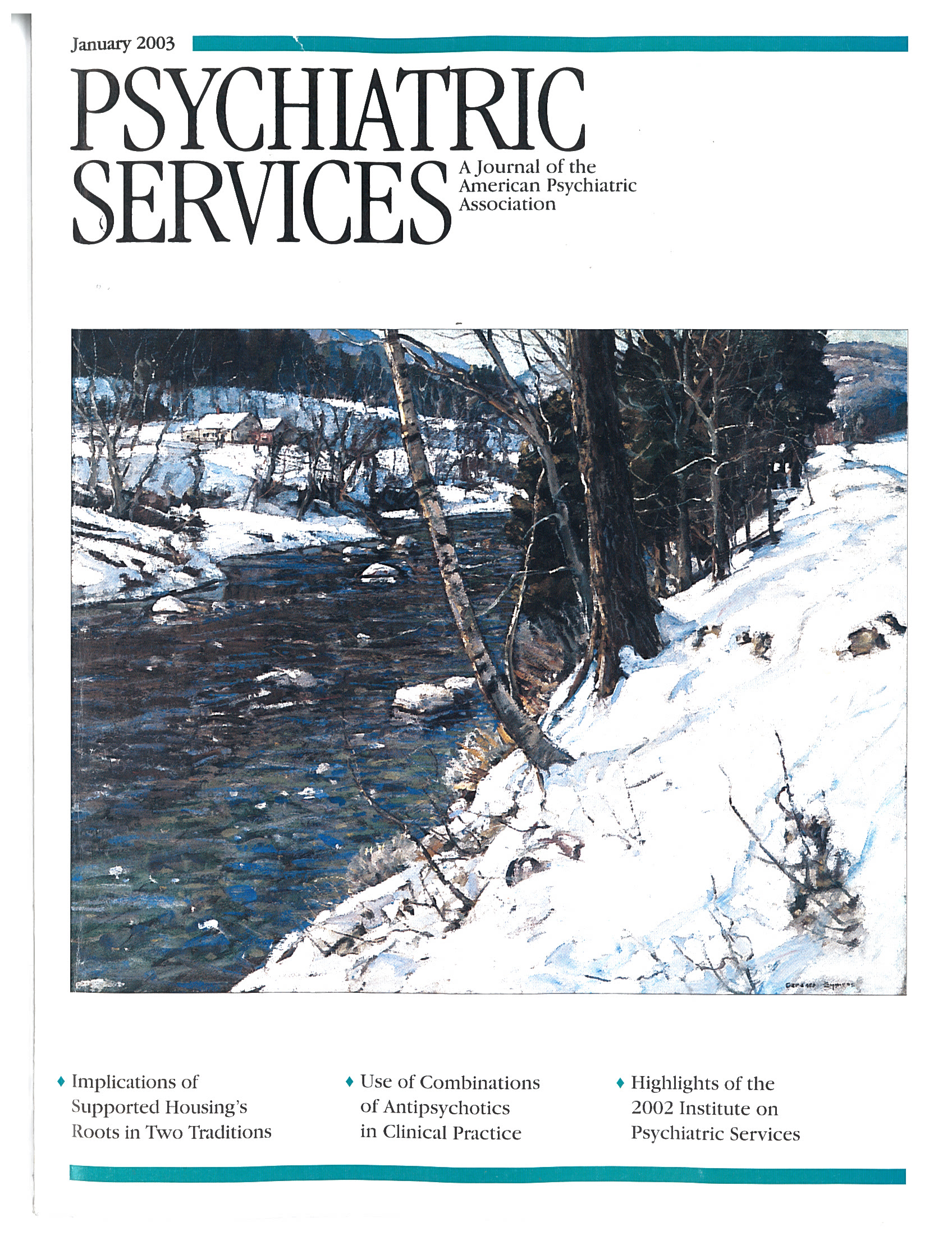Racial Bias in the Prescription Atypical of Antipsychotics?
To the Editor: A number of reports have concluded that African Americans and other members of racial minority groups receive a lower standard of care than Caucasians (1,2). Atypical antipsychotic medications are now considered a first-line treatment for schizophrenia (3,4). We looked for racial and gender differences in the prescription of atypical antipsychotics for patients discharged between December 2000 and January 2001 from an acute care psychiatric hospital in southern New Jersey.
After we obtained approval from the hospital's internal review board, we reviewed charts for 164 consecutive discharges and obtained data on demographic characteristics, clinical diagnosis at discharge, and discharge medications. Chi square tests were used to assess racial and gender differences in the prescription of atypical antipsychotics. African Americans and Asian Americans were combined into one group because of the small number of Asian Americans.
Antipsychotic medications were prescribed for 100 patients, who constituted the study sample. The age range of these patients was 18 to 70 years. Sixty-one of the patients were women. Fifty-seven were Caucasians, 39 were African Americans, and four were Asian Americans. Sixteen of the patients had a diagnosis of schizophrenia, 28 had schizoaffective disorder, 17 had bipolar disorder, 21 had major depressive disorder, and 18 had other diagnoses. Seventy-four patients were taking an atypical antipsychotic medication.
Atypical antipsychotics were prescribed for 39 of the 57 Caucasians (68 percent) and 37 of the 43 patients in the racial minority group (86 percent) and for 29 of the 39 males (74 percent) and 47 of the 61 females (77 percent). No statistically significant racial or gender differences in the prescription rates were found.
The results of this study differ from those found by Owen and associates (5). In that study atypical antipsychotics were significantly more likely to be prescribed for Caucasians. One reason for the absence of racial differences in prescription rates in our study may be increased attention to the issue of race as a result of the U.S. Surgeon General's report on racial biases in the treatment of psychiatric disorders (1). Another possibility is the large proportion of African Americans and women in this study. Racial biases in the prescription of medications for men may be more evident in studies with small proportions of persons from racial minority groups. Also, our study was conducted at a university-affiliated hospital in which faculty serve as attending physicians. Their practices may differ from those of other practitioners. Finally, the study was limited in scope, which may account for the absence of racial differences in prescription rates. The study was cross-sectional and did not control for numerous factors that influence prescribing decisions, including patients' treatment history, insurance coverage, severity of illness, comorbid psychiatric and medical conditions, and the medication dosage and its correlation with diagnosis. Biases may have been detected if all such factors were examined.
The authors are affiliated with the department of psychiatry in the School of Osteopathic Medicine of the University of Medicine and Dentistry of New Jersey in Cherry Hill.
1. US Surgeon General: Mental Health: Culture, Race, and Ethnicity: A Supplement to Mental Health: A Report of the Surgeon General. Washington, DC, Department of Health and Human Services, 2001Google Scholar
2. Walkup JT, McAlpine DD, Olfson M, et al: Patients with schizophrenia at risk for excessive antipsychotic dosing. Journal of Clinical Psychiatry 61:344-348, 2000Crossref, Medline, Google Scholar
3. Expert Consensus Guidelines: Treatment of Schizophrenia. Journal of Clinical Psychiatry 60(suppl 1):3-80, 1999Google Scholar
4. Mossman D, Lehrer DS: Conventional and atypical antipsychotics and the evolving standard of care. Psychiatric Services 51:1528-1535, 2000Link, Google Scholar
5. Owen RR, Feng W, Thrush CR, et al: Variations in prescribing practices for novel antipsychotic medications among Veterans Affairs hospitals. Psychiatric Services 52:1523-1525, 2001Link, Google Scholar



